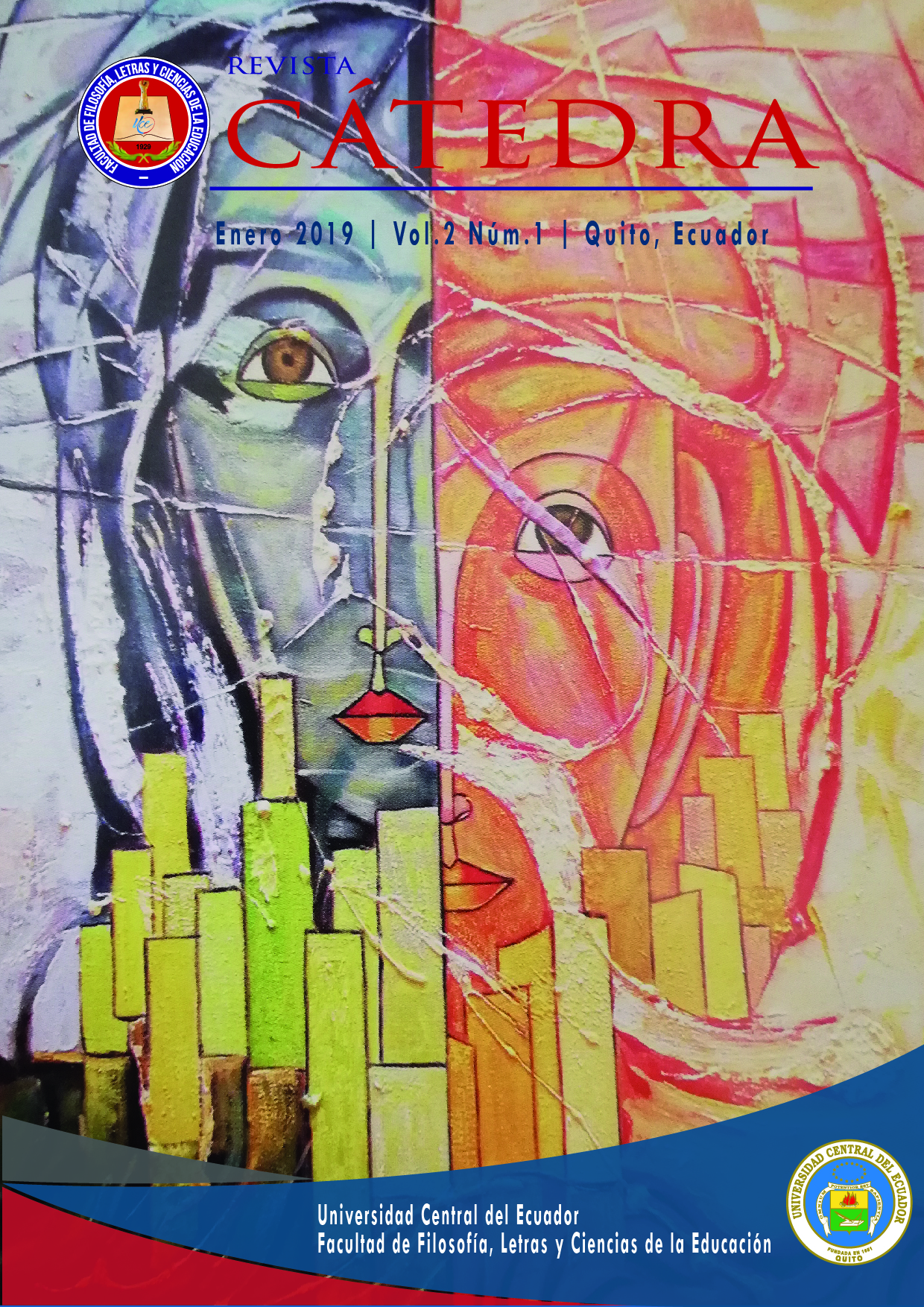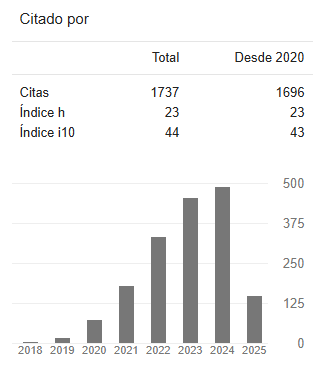The substantive and dialogical dimensions of critical thinking in high school and university students
DOI:
https://doi.org/10.29166/catedra.v2i1.1215Keywords:
Learning -dialogical dimension -substantive dimension -education -critical thinkingAbstract
Critical thinking is undoubtedly one of the fundamental pillars in the personal, social and academic development of the individual because it helps to process and build knowledge aware of the real world; In this study it is necessary to analyze and evaluate the students, as well as to determine the evolution and differences in the substantive and dialogical dimensions in high school students, second and seventh level of university students. On this basis, 375 students were investigated, with the quantitative approach, emphasized in the analysis of descriptive and comparative character in the beginning with the group data to the normality test of Shapiro Wilk (when dealing with discrete scores). The substantive writing dimension had a significance p = 0.05, so the Kolmogorv Smirnov test with Lilliefor correction was necessary, obtaining a significance p = 0.11, with which it can be said that all met the criterion of normality (p> 0.05). With respect to the research objectives, the mean value for each of the dimensions and categories was considered, in order to establish the hypothesis tests according to the ANOVA statistic and the Tukey test at a significance of 5%. From the results obtained it was determined that there are shortcomings in high school students and decrease as they go beyond the level of instruction.
Downloads
References
Alejos, A. (22 de Septiembre de 2005). DESAROLLO DEL PENSAMIENTO CRÍTICO. Recuperado el 10 de 01 de 2017, de http://avita1706.blogspot.com/2005/09/qu-es-el-pensamiento-crtico.html
Boisvert, J. (2004). La formación del pensamiento crírico: Teoría y práctica. México: IEPSA.
Dewey, J. (2007). Cómo pensamos. Barcelona: Paidós.
El Comercio. (07 de 03 de 2018). 698 puntos fue la nota promedio de la Ser Bachiller. Sociedad. Recuperado el 23 de 10 de 2018, de https://www.elcomercio.com/actualidad/promedio-serbachiller-universidades-carrera-estudiantes.html
Elder, L., & Paul, R. (2005). https://www.criticalthinking.org/. Recuperado el 19 de 11 de 2018, de Estándaresde Competencia para el Pensamiento Crítico: https://www.criticalthinking.org/resources/PDF/SP-Comp_Standards.pdf
Ennis, R. (1985). Obtenido de http://www.econ.uba.ar/www/institutos/contable/ceconta/Foro_practica_profesional/Principal/PDF_Simposio_2010/T_2010_06_Diaz_Montenegro.pdf
Hernández, R., Fernández, C., & Baptista, M. (2014). Metodología de la investigación (Sexta ed.). Mexico: McGRAW-HILL/INTERAMERICANA EDITORES. S.A. DE C.V. Recuperado el 23 de 10 de 2018
Laiton, I. (2012). https://books.google.com.ec. Recuperado el 19 de 11 de 2018, de Enseñanza Del Pensamiento Crítico, Sustento Teórico Y Hallazgos: https://books.google.com.ec/books/about/Ense%C3%B1anza_Del_Pensamiento_Cr%C3%ADtico_Sust.html?id=q_zhuQAACAAJ&redir_esc=y
Marciales Vivas, G. P. (2003). https://biblioteca.ucm.es. Recuperado el 25 de 10 de 2018, de PENSAMIENTO CRÍTICO: DIFERENCIAS EN ESTUDIANTES UNIVERSITARIOS EN EL TIPO DE CREENCIAS, ESTRATEGIAS E INFERENCIAS EN LA LECTURA CRÍTICA DE TEXTOS: https://biblioteca.ucm.es/tesis/edu/ucm-t26704.pdf
Montoya, J. I. (11 de 04 de 2007). http://revistavirtual.ucn.edu.co/. Recuperado el 16 de 11 de 2018, de Acercamiento al desarrollo del pensamiento crítico, un reto para la educación actual: http://revistavirtual.ucn.edu.co/index.php/RevistaUCN/article/view/165/318
Ribadeneira, M. (2012). Estrategias docentes y su influencia en el desarrollo del pensamiento crítico en los /as estudiantes del primer semestre de la Carrera de Ciencias Sociales Facultad de Filosofía y propuesta de guía pedagógica. Quito: UCE.
Saiz, C. (2002). Pensamiento Crítico.
Santiuste, B., Ayala, B., García, E., González, J., Rossignoli, J., & Toledo, E. (2001). El pensamiento crítico en la práctica educativa. Madrid: Fugaz Ediciones.
Scriven, P. (1996). educacion.gob.ec. Obtenido de Manual del pensamiento crítico, conferencia Atlanta: https://educacion.gob.ec/wp-content/uploads/downloads/2013/03/SiProfe-Didactica-del-pensamiento-critico.pdf
Serrano, R. d. (2011). El pensamiento crítico del estudiante como opción para la calidad de la educación superior. Cuadernos COLAM, 4.
Downloads
Published
Versions
- 2020-09-03 (2)
- 2019-01-30 (1)









